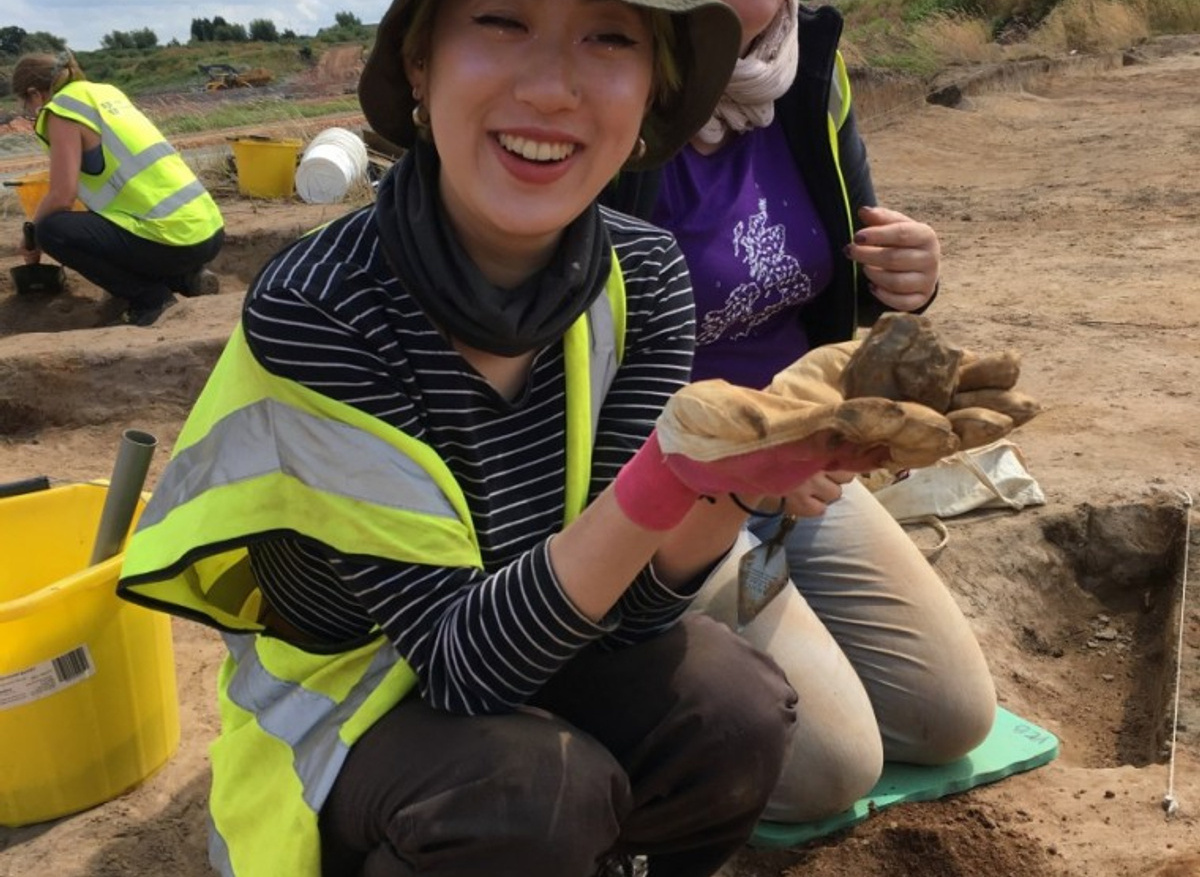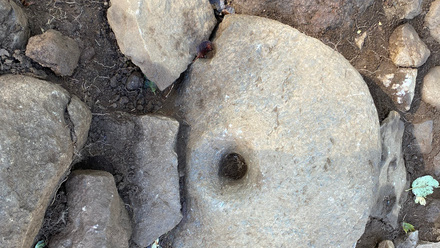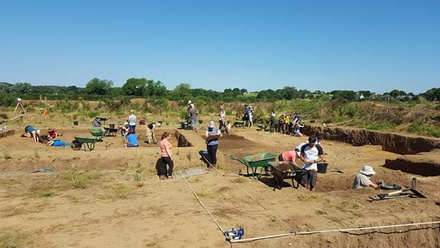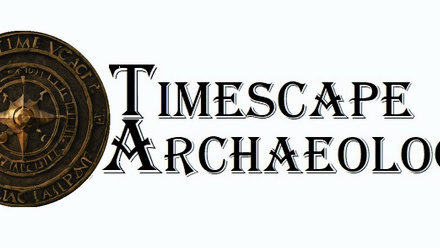I work in the Department of History, Classics and Archaeology at Birkbeck and every summer I take our first year students out into the fens to excavate at Must Farm Quarry, Cambridgeshire. This field school is co-taught with archaeologists from the Cambridge Archaeological Unit and gives our students direct work experience of professional practice as part of their academic programme.
At Must Farm there was a time before fenland, for an ancient dryland is buried below the peats and clay. In the Early to Middle Neolithic (from 6000 to 5000 years ago), people were setting up camp in woodland on a gravel terrace that overlooked the floodplain of the Neolithic Nene. We have discovered lots of worked flint, pottery and animal bone from test-pits into the ancient soil, and small groups of cooking pits and rubbish pits. The pit clusters created settings for small groups of people to carry out multiple-tasks (cutting, carpentry and butchery) whilst also preparing, cooking and eating food. There is a short duration between the carrying out of task activities and the deposition of things in pits. There is a sense of mobility with domestic animals, cattle - pastoralism. Hunting is also important, many arrowheads have been recovered as single finds in the ancient soil near to the river, and alongside cattle there is a wild element to the animal bone assemblage e.g. auroch.
The environment changed, and 1000 years later there were extensive estuarine mudflats of the Early Bronze Age Nene. This was a changing landscape that saw dryland inundated by the sea, and people marked out the lower wetland edge by building burnt stone mounds. On the gravel terrace, within woodland clearings, there were large spreads of rubbish (called middens) and large groups of pits. Beaker pottery was recovered from the features, alongside flint tools such as scrapers and awls, and fragments of animal bone from boar/pig and sheep. The pit clusters created a setting for a larger group to carry out multiple-tasks whilst also preparing, cooking and eating food. There was a focus on working hides.
However, the landscape was getting wetter and a peat formed over this setting too. Only 500 years later the floodplain and gravel terrace were marsh, and dryland was limited to higher areas of land. The people of the Middle Bronze Age noticed and took action, they dug landscape-scale ditches between dryland and wetland, and the gravels from the ditch were flung up on the inner edge to form a raised causeway through the landscape. The ditch was not cut to drain water, in fact it filled with water immediately, but it was used to mark out dryland settlement. Field boundaries were cut perpendicular to the boundary ditch in order to form portions of farmland for various groups of people. Climate and environment had changed - 3500 years ago people were acutely aware of the change and they were taking drastic steps to deal with it – does this sound relevant to our time too?







